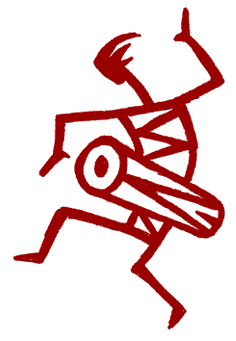

Thought of the Week Archives |
 |

|
|
|
May 20, 2002 Crying Crying is essential to human health. Just as sweating is necessary for heat regulation, crying is necessary for emotional regulation. Unfortunately, our society reacts to crying with fear and contempt. Crying is often seen as a lack of control and as a sign of weakness. In fact, strong or prolonged bouts of crying are considered a symptom of emotional illness, when in reality, they are an attempt to heal. Natural systems - whether rivers, trees, or people - all require a steady flow of nutrients and energy in and out. If the flow is blocked in any way, a problem or sickness will occur. Crying is an essential outflow. When our system is in pain, it moves some of the destructive energy out through movement, sound, and crying. If we are holding onto older hurts and traumas, crying can get us in touch with those feelings and help us to purge them and rebalance. Unfortunately, our natural ability to cry, and thus to heal, has been suppressed. Crying is part of our emotional immune system, and we desperately need to get it back. It seems like such a simple thing, but many of us have forgotten how to really cry. We get "misty" in a movie and think we're emotional. We sniffle, drop a few tears, and think we are crying. But a dripping tap isn't Niagara Falls. Authentic crying is loud and almost always involves wailing. Tears and mucous flow, and the body is wracked with involuntary shudders and deep breathing and gasping. There is a physical sense of pressure and pain, often in the chest area, that is both propelling the cry and being relieved by it. In its full expression, crying is an involuntary response, something not directed or controlled by the thinking brain. Authentic crying is a powerful, full-body event. As with any response to pain, it often involves vigorous body movements. This may include curling up, rocking, shaking, twitching, stretching, and writhing. To those unfamiliar, it may seem like the crying will never end, but it always does. With proper non-judgmental support, crying will lead to an inner emotional movement towards balance and health. Healing is not always immediate, but will occur with time. As children, many of us were shamed for crying, and we were often punished for our "weakness." When we cry now, we may feel embarrassed and afraid. To heal, we need a witness who will support us as we begin to let our feelings flow. Then, as we discover that we are safe, we can let our crying blossom into the healing event that it truly is. You can "practice" authentic crying when you are crying alone, where no one can hear. As the feelings rise, really let the sound and movement happen. Let yourself be loud. Let the volume be in proportion to the feelings and pressure you are experiencing. If you can belt out a song when you're alone, you can belt out a cry. Due to years of oppression, you may suddenly feel afraid or self-conscious, even when no one is around. If this happens, just take note of those feelings. Remember that what I'm suggesting is just a test. Even though crying is as natural as breathing, keep in mind that any further deep emotional work will require the support of an experienced facilitator. Each of us has a unique emotional minefield that needs to be cleared carefully and thoroughly. Be cautious. When it comes to crying, however, "Be Loud and be Proud." |